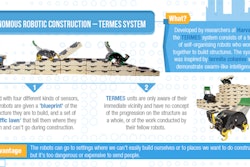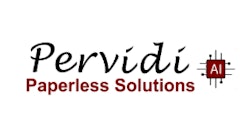
Do you have the porous (also called pervious) pavement maintenance blues? Are you finding this assignment by your customers one that cannot be done long term without permanently damaging it? Is it costing you more time and effort (and your profit) to try to maintain this specialized pavement?
Well, you’re not alone.
There are some steps that you and your clients can take to make this job easier, and more profitable! Here are some solutions to the “porous pavement blues” which will even help extend the life of these specialized pavements.
Porous pavement can be made from either asphalt or concrete. Each kind of pavement requires different methods of construction, but the need to pass water through the pavement to allow rapid drainage is the primary function of porous pavement. Both types of material must allow some type of traffic, either foot traffic or vehicles. Porous pavements must be able to support and sustain the weight load of this traffic without collapsing. Whether it is porous asphalt or pervious concrete pavement, they must be stable under the stresses caused by changes in the temperature, the exposure to sunlight, freeze-thaw cycles and ice, and general wear over time.
Unfortunately, these pavements deteriorate much more rapidly than those that do not let water pass through them. Why? Rain and the very nature that water must pass through these pavements quickly contributes to the destruction of these pavements. The porous nature of the pavement structure itself is a contributing factor in the reduced longevity of these pavements.
All porous pavements have a substantially greater percentage of voids than their “solid” counterparts. A pervious asphalt pavement may have as much as 50% air voids (minimum 16.5%). Pervious concrete pavement has minimum air voids of about 18%. The specifications required are generally dictated by the waste water or storm water requirements set by a local agency. Many municipalities and some states now require that a specific percentage of new pavement be constructed of porous asphalt or concrete.
Of equal importance is where the water goes once it passes through the pavement. Sand filters, catch basins, rain gardens and links to the sewer system must be taken into consideration when installing porous pavement, and more importantly, how the pavement is maintained.
So, how do we maintain porous pavement and make it last as long as conventional pavements? Yes, it is possible to maintain porous pavement in good, functional condition that lasts as long as the conventional pavement adjacent to it.
The first step in every pavement maintenance program, whether it is porous or conventional pavement, is to keep the pavement clean.
Sounds easy, doesn’t it? We first remove the debris from the pavement. The “stuff” we are removing is a combination of paper, cigarette butts, twigs and leaves, soil and broken aggregate. We sweep or blow conventional pavements clean with mechanical broom sweepers, vacuum sweepers or blowers. This approach works well for conventional pavement, but for porous asphalt or pervious concrete requires a different approach to keep the surface and the pores clean and functioning.
Sweeping relying on mechanical broom-type sweepers moves the debris from one place to another on the pavement before it’s picked up and deposited in a hopper. My opinion is that broom sweeping any porous pavement is not a good maintenance practice because we don’t want the debris to be pushed or swept into the open pores of the pavement by the sweeper brushes. Further, the sweeping action of a broom sweeper breaks down the debris into smaller particles which will cause this type of pavement to fail.
There are two excellent methods that can be employed to remove the debris without adding to future pore plugging and drainage issues. The preferred method of choice is using a vacuum sweeper or walk-behind unit with sufficient vacuum suction to remove the surface litter and small dust and aggregate particles form the surface of the porous pavement. It is essential to keep these pavements as free as possible from any debris that will clog the voids and reduce the porosity of the pavement. Damage to these pavements generally starts at the surface.
Blowing the surface clean with a high velocity blower is an alternate method, but is not preferable because of the risk of pore plugging when blowing the debris off the surface. In addition, blowing will not remove any aggregate or dust particles form the pores of the pavement surface.
Once the pavement has been properly cleaned, the second step is to clean or remove the deep-seated debris from deep in the pavement matrix. Over time, debris, organic matter from leaves and twigs, paper, and other material might get forced deep into the porous pavement. Specialized chemical combinations containing detergents and digesting agents should be applied at least once a year to keep this debris from slowing down the pavement’s ability to drain water. Using safe digesting agents, coupled with cleaning agents that dissolve or emulsify these materials, will help restore the performance of these pavements.
The third, and final step to a complete porous pavement maintenance program is to treat these pavements with new polymeric binders to help strengthen and maintain the integrity of these pavements. It is critical to introduce specialized binders in asphalt which reverse the oxidation and restore the polymer modified asphalt cement which hold the aggregates together. There is about 8 microns of binder coating the aggregate. These oxidize over time and asphalt becomes a “rock-like” pavement, rather than remaining a flexible pavement. All asphalt paving undergoes this transition over time. Porous asphalt pavements have an accelerated life span because of this and the plugging of the air voids. Applying fresh binders formulated to restore and rejuvenate these binders every year or two will extend the life of these pavements.
Pervious concrete pavements need to have specialized “strengthening agents” which waterproof and stop any ASR (alkaline-silicon reaction) from occurring, and stop any further deterioration. This should be applied on a yearly basis.
Neither treatment should impede the flow of water once they are applied and allowed to do their job. Treating porous asphalt or pervious concrete pavements using these methods will extend the pavement performance while keeping it at the 100% level. They will also help you keep your customers satisfied and maximize your bottom line.
Shel Chesky is CEO of BioSpan Technologies Inc., Ballwin, MO, producer of rePlay pavement preservation agent. BioSpan is committed to providing cost-effective and environmentally friendly solutions in the fields of paving and pavement preservation, biodecontamination, environmental recovery and resource utilization of solid waste. For details visit www.biospantech.com.


















